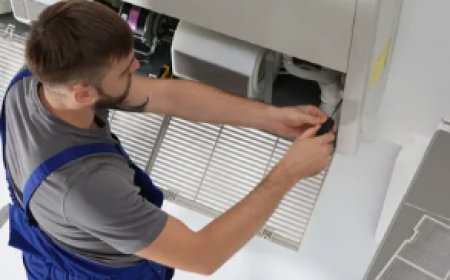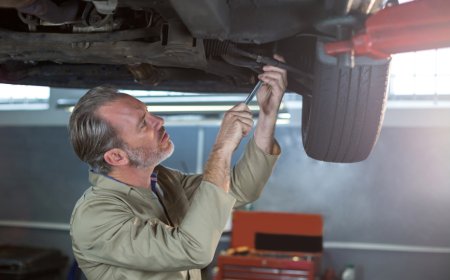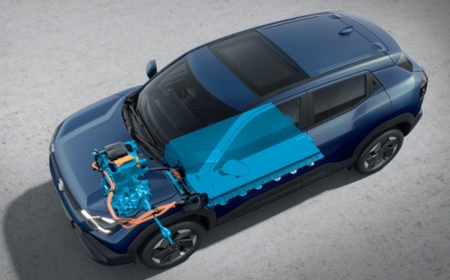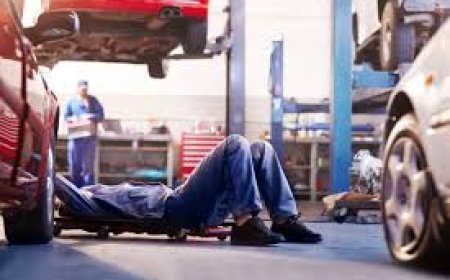Detroit’s Other Legacy: Salvage Yards as Living Museums of American Automotive History
Explore how salvage yards in Detroit preserve car history. Learn how today’s scrap culture and Used Car Buyer services continue this legacy across the world.

Detroit is known around the world as the birthplace of the modern car. The citys factories, workers and designs helped shape an entire industry. But while museums and showrooms celebrate what was built, another part of the story can be found in an unlikely place the salvage yards. These yards, often overlooked, hold more than just rusted shells. They hold stories.
For those with an interest in the history of American cars, a walk through these spaces reveals much about the past. From rare finds to forgotten models, salvage yards in and around Detroit offer a picture of what driving once looked like and how it changed with time.https://www.carremovalsydney.com.au/
The Rise of Detroit and the Birth of the Scrap Yard
At the start of the 20th century, Detroit was booming. With companies like Ford, Chrysler and General Motors setting up their headquarters and production lines, millions of vehicles were produced across the decades.
As more people bought cars, a new problem began to emerge. Where would old or damaged cars go when they were no longer usable? This question gave rise to the scrap yard a place where damaged vehicles were dismantled for parts, and metal was sorted and reused.
In Detroit, scrap yards began popping up near factories and working-class neighbourhoods. Many of them started small, run by families who collected broken vehicles and stripped them for anything useful.
Why Scrap Yards Became Time Capsules
Unlike display museums, salvage yards were not set up to showcase history. But over time, they unintentionally became archives of Americas motoring past. Vehicles that once filled the streets but fell out of favour due to fuel issues, design flaws or new technology ended up parked in rows behind wire fences.
These vehicles remained untouched for years. Dusty dashboards, cracked leather seats, faded paintwork all signs of their era. What sets these places apart is the range. One might find a 1957 Chevy Bel Air sitting next to a 1980s Pontiac Fiero. Each shell tells its own story, and together, they create a record of changing styles and priorities.
The Role of Salvage in Parts and Restoration
Over the years, Detroits salvage yards have drawn in collectors, mechanics and restoration workers. Many rare parts, impossible to order new, can still be found under the hood or in the boot of a forgotten model.
Car clubs and builders often visit to locate original components for classic restorations. This access to parts has kept many historic cars on the road or display floor. While not every yard preserves the vehicles intact, many leave classics untouched until requested, allowing history to stay in place even if only temporarily.
Some yards even keep track of rare models in their inventory, knowing that there is a market for parts that match original builds.
Culture and Curiosity in the Yard
It is not only mechanics who walk through these yards. Writers, photographers and filmmakers have also found value in their setting. The quiet, rust-covered frames offer a visual contrast to the fast-paced world outside. A shot of a broken steering wheel or dented fender often speaks louder than a polished showroom.
These salvage spaces have made their way into books, documentaries and galleries. They represent the forgotten side of Detroit the one that worked, broke down, and was left behind.
There are stories of drivers who dropped off their first car, now old and weathered, or of workers who once built the same models now stacked for recycling. These yards connect the personal with the industrial, forming a kind of public memory through metal and rubber.
What the Future Holds for Salvage Spaces
Today, many of Detroits old yards face pressure from development and environmental rules. As land becomes more expensive and storage laws change, fewer yards keep older vehicles around. Some have shifted toward crushing and processing metal quickly, moving away from keeping cars whole.
This shift may lead to the loss of many rare pieces of car history. Without clear records or digital archives, once a car is crushed, its story often disappears with it.
That is why some communities are now documenting salvage yards. Volunteers and artists have begun photographing and listing classic models before they vanish. In doing so, they hope to preserve what the scrap industry cannot.
From Detroit to Sydney: The Scrap Yard Lives On
While Detroit holds much of the history, the idea behind salvage yards travels far beyond the United States. In Australia, the concept of scrapping and repurposing vehicles has taken on new importance due to both environmental rules and the growth of urban areas.
In cities like Sydney, many old cars are collected from homes, driveways or worksites. Some are dismantled for useful parts, while others are stripped of material for recycling. These actions reflect the same values that shaped Detroits legacy making use of what remains, and letting every vehicle end its life with purpose.
In this process, local services step in to support car owners who no longer have a use for their old vehicle. Whether it is an unused sedan, a station wagon or an ageing van, options exist for those looking to clear space. Reaching out to a Used Car Buyer is often the first step. In doing so, the vehicle enters a system where it might be reused, restored, or responsibly recycled. This helps reduce waste while continuing the chain of purpose that started long ago.
Conclusion
Salvage yards may not have clean floors or polished lights, but they carry the weight of memory. In Detroit, they remind visitors of the citys rise, the cars it created, and the people who drove them. These yards are more than junk they are museums without signs, filled with stories that can be touched and seen.
The culture of scrapping will continue to evolve, just as cars do. As electric vehicles rise and new designs emerge, new challenges will follow. But for now, the salvage yard stands as a reminder of what came before, and why it still matters.


































